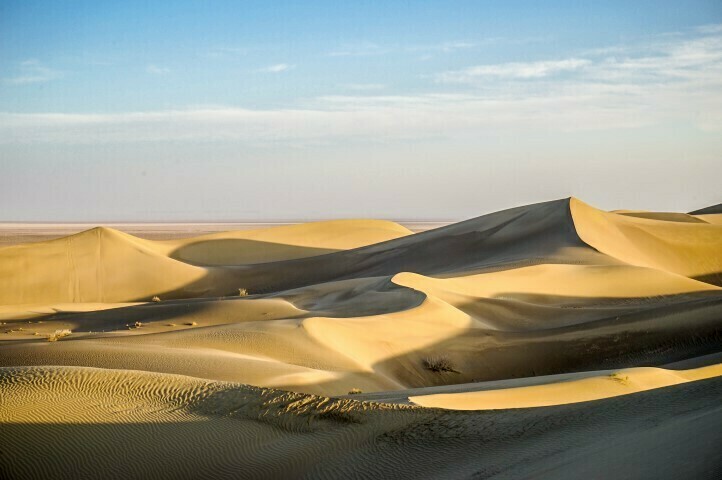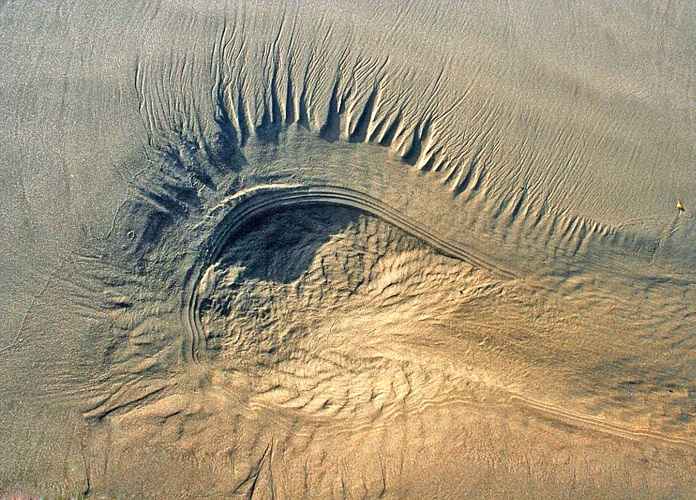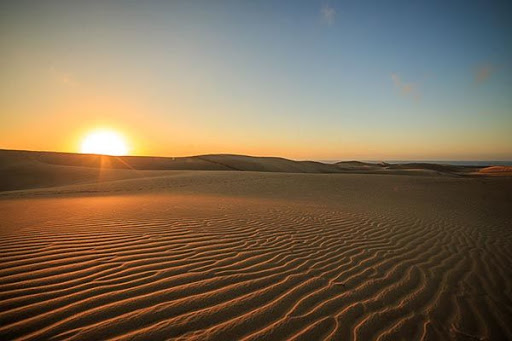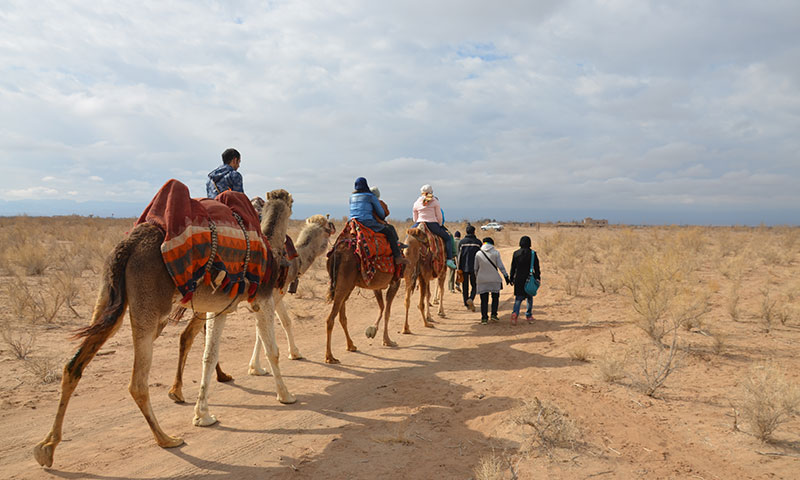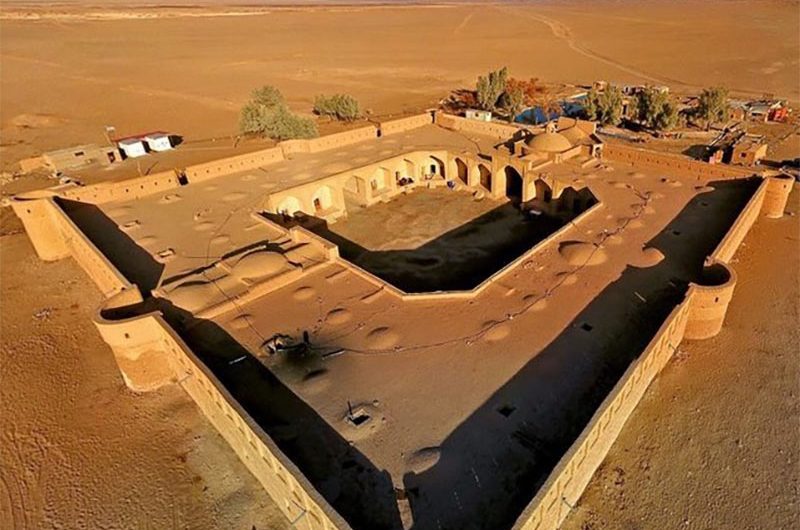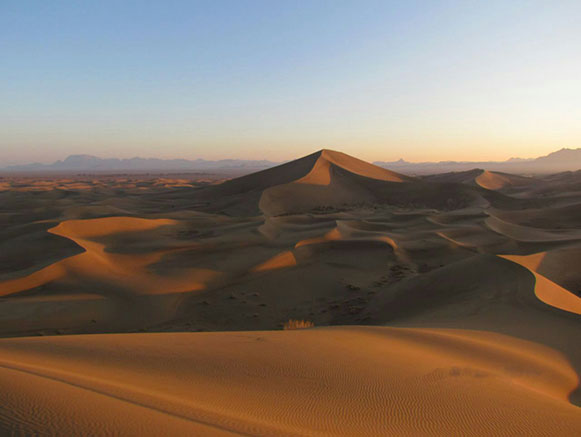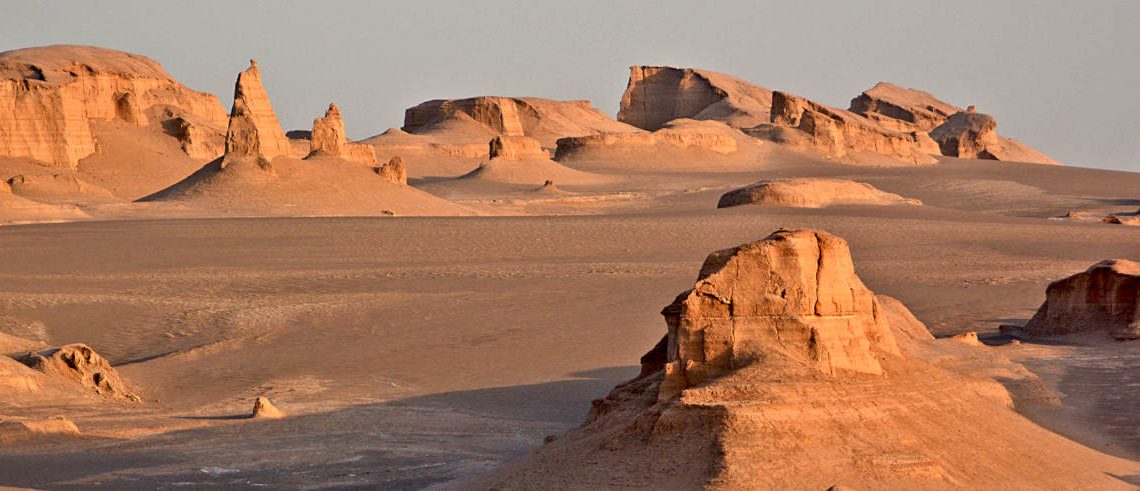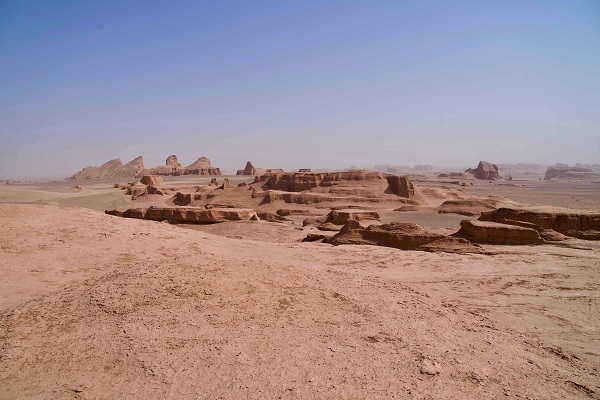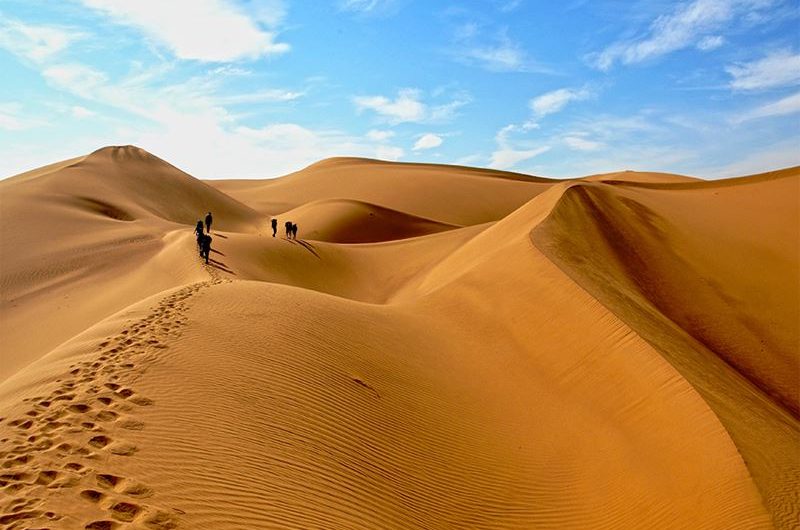Dasht-e Kavir Dasht-e Kavir, also known as the Central Desert, is a vast desert about 800 km long and 320 km wide south of the Alborz mountain range. The Central Desert is the largest desert in Iran, stretching from the north to the central and eastern slopes of Alborz and from the west to the road from Damghan to Jandagh. The Kavir National Park, the Kharturan National Park, the Bajestan Desert, the Haj Ali Al-Gholi (Damghan) Desert, the Maranjab Desert and the Rig Desert are located in this region covering more than 77,000 square kilometers. Its temperature reaches 50 degrees Celsius in summer and, sometimes, the temperature difference between day and night (thermal amplitude) reaches almost more than 20 degrees Celsius. This plain has some very spectacular features, including a salt lake, salt domes, and sand dunes. The largest dune field in Iran is called Rig-e Boland that starts from Aran O Bidgol and continues towards Ardestán, and has a length of 90 km. Isfahan province has 16 dune fields in Dasht-e Kavir, of which 300,000 hectares have been reforested and stabilized. Nowadays, with the particular increase in both internal and external tourism, this desert part and many typical towns on the periphery of the desert, have resumed a growth phase valuing and reviving abandoned villages. In fact, almost abandoned rural houses and villages, both due to lack of water and lack of pasture, have today been converted into traditional houses capable of accommodating tourists who appreciate the desert landscape. Dasht-e Kavir, due to its vastness, offers many opportunities for adventure. Now it is possible to organize, even during a classic trip, an overnight stay in one of these wonderful places. If you are passionate about mountains, hiking, mountaineering, desert camping, anthropology, historical landscapes and the fascinating culture of the
Dasht-e Kavir
Dasht-e Kavir, also known as the Central Desert, is a vast desert about 800 km long and 320 km wide south of the Alborz mountain range. The Central Desert is the largest desert in Iran, stretching from the north to the central and eastern slopes of Alborz and from the west to the road from Damghan to Jandagh. The Kavir National Park, the Kharturan National Park, the Bajestan Desert, the Haj Ali Al-Gholi (Damghan) Desert, the Maranjab Desert and the Rig Desert are located in this region covering more than 77,000 square kilometers.
Its temperature reaches 50 degrees Celsius in summer and, sometimes, the temperature difference between day and night (thermal amplitude) reaches almost more than 20 degrees Celsius. This plain has some very spectacular features, including a salt lake, salt domes, and sand dunes. The largest dune field in Iran is called Rig-e Boland that starts from Aran O Bidgol and continues towards Ardestán, and has a length of 90 km. Isfahan province has 16 dune fields in Dasht-e Kavir, of which 300,000 hectares have been reforested and stabilized.
Nowadays, with the particular increase in both internal and external tourism, this desert part and many typical towns on the periphery of the desert, have resumed a growth phase valuing and reviving abandoned villages. In fact, almost abandoned rural houses and villages, both due to lack of water and lack of pasture, have today been converted into traditional houses capable of accommodating tourists who appreciate the desert landscape.
Dasht-e Kavir, due to its vastness, offers many opportunities for adventure. Now it is possible to organize, even during a classic trip, an overnight stay in one of these wonderful places.
If you are passionate about mountains, hiking, mountaineering, desert camping, anthropology, historical landscapes and the fascinating culture of the Middle East, SITO Travel will help you organize your trip to Iran. Get in touch with us because our experience is born and developed in this field.


